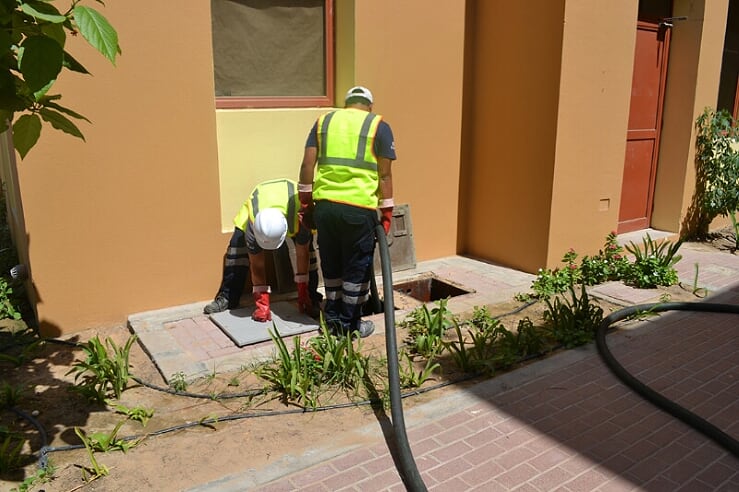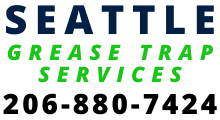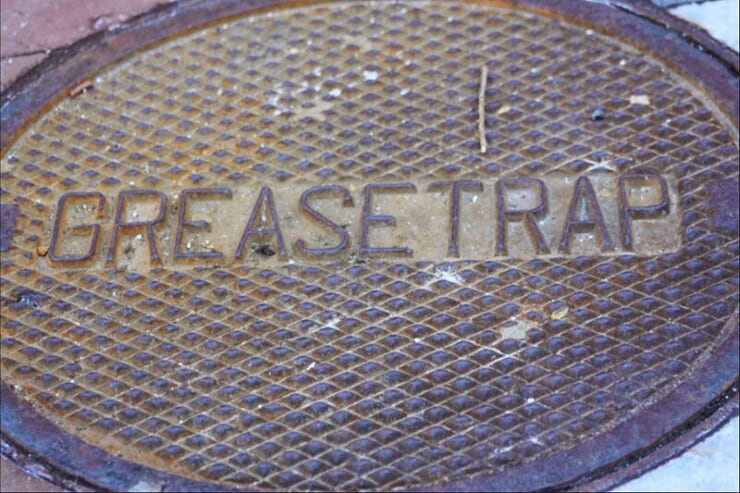Grease Interceptor Cleaning in Seattle
Seattle Grease Interceptor Cleaning
Grease Interceptor Cleaning Services in Seattle

Grease Interceptor Cleaning Seattle and its Tenets
They’re not just a fancy sink trap; grease interceptors play a pivotal role in your kitchen’s sanitation process and on the city’s water sustainability. Strategically placed right outside your premises, it will store up to 750 gallons of oils, grease, and varied food solids, preventing them from contaminating the general sewage system. We can remove all of it using our grease interceptor cleaning service.
Naturally, not all grease interceptors are equal. There are many factors that need to be taken into account during the initial installation. A smart setup can make all the difference between trapping up to 30% of all grease to catching up to 85% of it. While the latter figure may be considered the “golden standard” when it comes to grease trapping, it will also require proper maintenance and cleaning in order to continue working at this level of efficiency.
The industry standard is to hydro-jet grease interceptors thoroughly every 6 to 12 months. The exact frequency will depend on the amount and type of food prepared on the premises. However, as wasteful as it may seem to clean grease interceptors too often, the consequences of not doing it often enough may be just as costly: from line blockages to sewage overflows and even hefty city fines here in Seattle.
How is the pumping and cleaning process done?
Rather than just one big filter and a trapping chamber, grease interceptors are often made up of several chambers and manholes. These offer extra protection, as they make it significantly harder for oil and grease to spill over. However, as anyone who has ever had to wash textured crystal glasses knows, the less irregular a shape is, the easier it becomes for dirt and residues accumulating at the edges. Add that to the fact that the residues trapped by the grease interceptors are actually a mixture of different textures of fats, oils, and water, and suddenly, the cleaning process is no longer a simple pump and wash.
Grease Interceptor Cleaning Seattle and Proper Grease Removal
Cleaning a grease interceptor properly requires moving all of its contents from top to bottom. At this stage, it is important to remember that the stickiest, dirtiest fats will naturally be found deep down, as they are heavier than water. Powerful pumps will be needed to remove everything inside before we can actually apply the hydro jet washer. At this stage, large amounts of high-pressured water will do most of the work; they will slowly break down the deposits at the edges and bottom of your grease tank.
Call Us
At Seattle Grease Trap Services, we believe that this operation is the most delicate one in the industry. After all, many cheaper providers who simply skim off the water and oils from the top are endangering the city’s sewage system, your client’s health, and our profession’s reputations. We do not believe in shortcuts!
How can I tell if my grease interceptor is full?
Grease Interceptor Cleaning Seattle and When do you Need it?
Nowadays, there is a wide array of capacities in the grease interceptor market, ranging from the standard 750 gallons, and all the way up to 3,000 or 4,000 gallons. Larger restaurants, especially those in the fast food industry, occasionally get tanks as large as 5,000 gallons – after all, when you are in the business of feeding hundreds, any small hiatus will cost you even more.
Grease interceptors are not only meant to catch fats, oils, and solids but also to separate them. As they are stored within, the difference in weight will allow each type of residue to find its own niche. This is why they are never really empty except on the actual day of installation or of cleaning, and, in turn, this is why potential oil spills are so noxious and underhanded. So if you are searching for grease interceptor cleaning near me Seattle, then come find us!
Call Us
For new commercial kitchens in Seattle, the only way to tell if your grease interceptor is full is to perform a sample manifest. As time goes on, you will be able to set this on a regular schedule; just keep in mind that the goal is for it to never reach 100% of its capacity, and in many areas, anything above 30% can earn you a fine.
Affordable & Reputable Grease Trap Services





